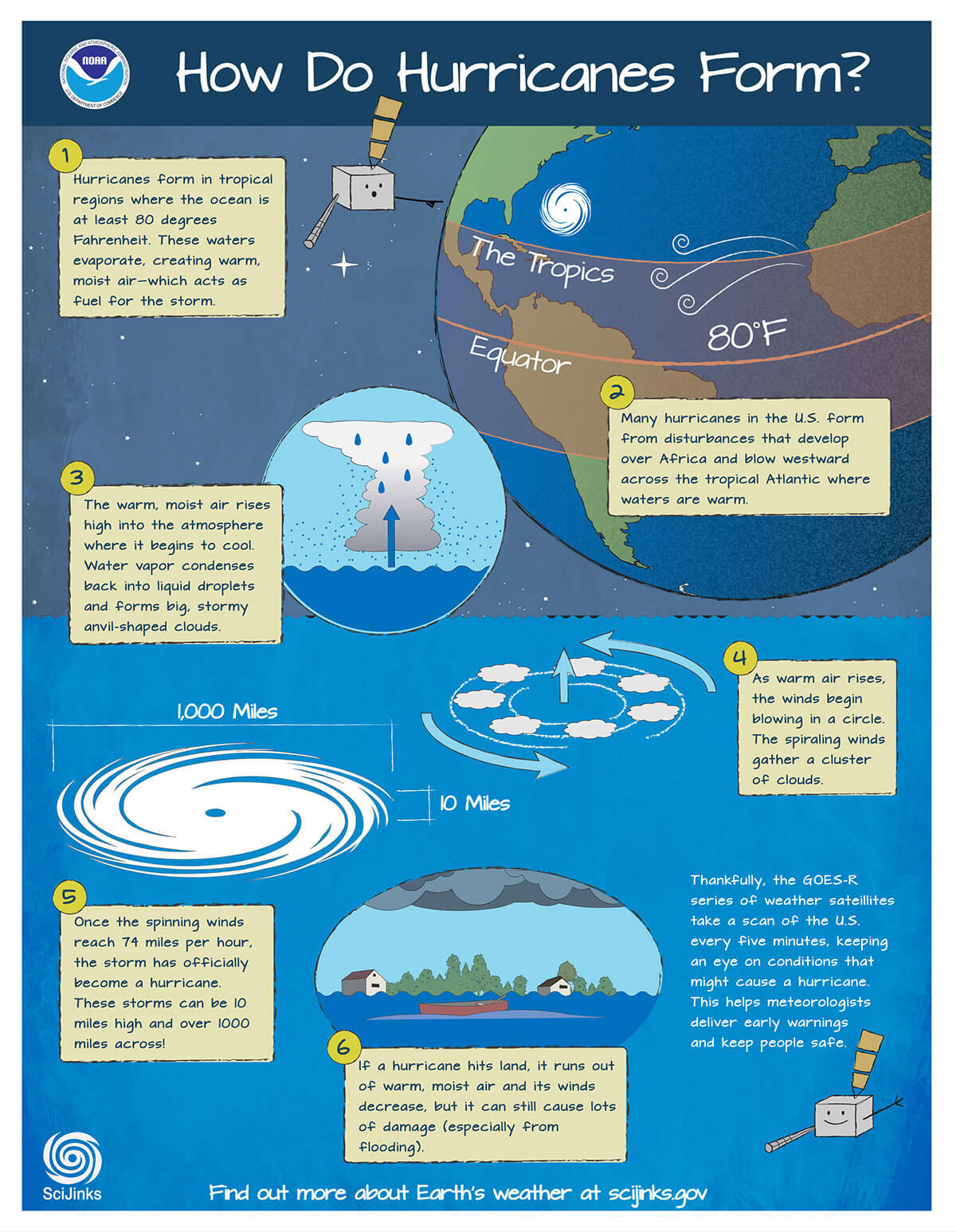Watch this video to learn how hurricanes form! Click here to download this video (1920x1080, 125 MB, video/mp4).
Download a poster version of this video!

Click the above image to download.
Video transcript
Hurricanes are very large and intense storms. But where do these giant storms come from?
A hurricane starts with the warm water found near the equator. Hurricanes typically only form in tropical regions where the ocean is at least 80 degrees Fahrenheit. These warm waters evaporate, creating warm, moist air - which acts as fuel for the storm.
Wind is also needed for a hurricane to form. Many hurricanes in the United States are caused by winds blowing across the Atlantic Ocean from Africa. This wind causes even more of the warm water to evaporate into the air.
The warm, moist air then rises high into the atmosphere where it begins to cool. Way up there, the water vapor condenses back into liquid water droplets.
Water droplets in the atmosphere form clouds - including big, stormy, cumulonimbus clouds.
As the warm air continues rising upward, the winds begin blowing in a circular pattern around a center. The spiraling winds gather up a cluster of big thunderstorm clouds. Once the spinning winds reach 74 miles per hour, the storm has officially become a hurricane.
Hurricanes are huge. They can be 10 miles high and over 1,000 miles across.
Once a hurricane hits land, it runs out of warm, moist air and its winds begin to weaken. But the storm can still cause lots of damage to communities near the coast. Thankfully we have weather satellites that are constantly monitoring the conditions down here on Earth.
The GOES-R series of weather satellites scan the hemisphere every 10 minutes and the U.S. every five minutes, keeping an eye on conditions that might cause a hurricane to form. Once a hurricane forms, the satellites can help predict the storm's intensity and track it minute-by-minute. This information allows meteorologists to deliver early warnings and help people stay safe.




